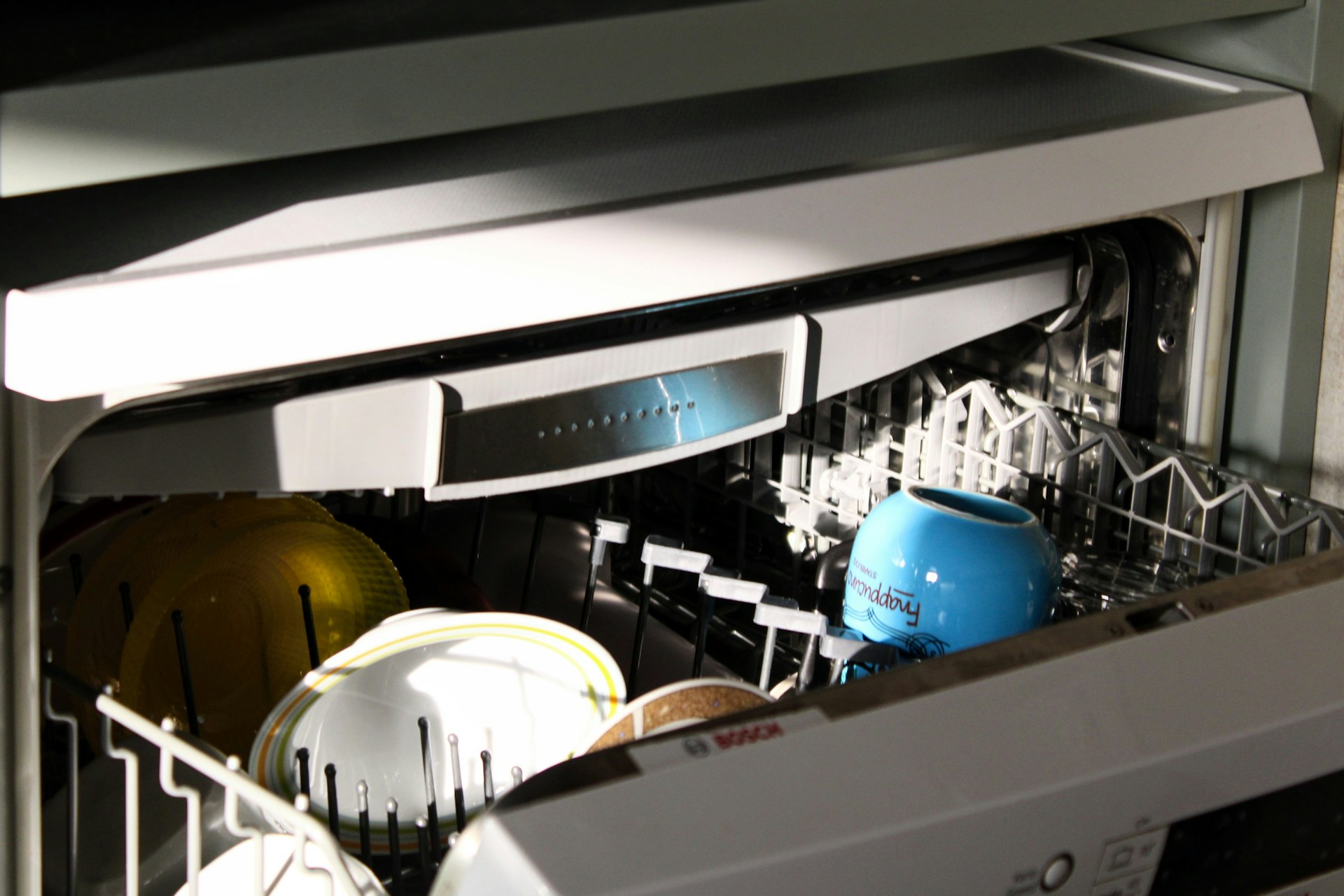
Opening your dishwasher after a cycle only to find dirty, food-caked dishes is a frustrating experience. You expect sparkling clean plates and cutlery, but instead, you’re left with a chore you thought was already done. This common household problem can disrupt your daily routine and leave you wondering what went wrong.
Before you start washing every dish by hand or considering a costly replacement, it’s important to understand that many dishwasher cleaning issues have simple solutions. Often, the problem isn’t a major malfunction but a minor issue that you can troubleshoot and fix yourself. From a clogged filter to improper loading, the cause is frequently something that can be addressed with a little know-how.
This guide will walk you through the most common reasons your dishwasher isn’t cleaning properly. We’ll explore six key areas, providing clear steps to identify and resolve the problem. By the end, you’ll know to get your appliance back in working order or decide if it’s time to call in a professional for a dishwasher repair.
Check for Overcrowding and Improper Loading
One of the most frequent causes of poor cleaning performance is simply how you load the dishes. A dishwasher cleans by spraying hot water and detergent onto your dishware. If items are blocking the spray arms or are packed too tightly together, the water jets can’t reach every surface.
How to Load Your Dishwasher Correctly:
- Avoid Overcrowding: Make sure there is enough space between dishes for water to circulate freely. Don’t stack items on top of each other.
- Ensure Spray Arm Movement: Before starting a cycle, give the spray arms a gentle spin with your hand to ensure they can rotate 360 degrees without hitting any dishes.
- Face Dishes Inward: Place plates, bowls, and soiled surfaces facing the center of the dishwasher, where the spray is strongest.
- Separate Silverware: Use the silverware basket slots to keep spoons, forks, and knives from nesting together, which prevents proper cleaning.
Inspect and Clean the Filter
Your dishwasher’s filter is designed to catch food particles and debris, preventing them from clogging the drain or being redeposited onto your clean dishes. Over time, this filter can become clogged, which significantly impacts cleaning performance. A dirty filter can lead to grime and a foul odor inside the machine.
Steps to Clean the Filter:
- Locate and Remove: The filter is usually located at the bottom of the dishwasher tub. It typically consists of a cylindrical filter and a flat mesh screen that you can twist and lift out.
- Rinse Thoroughly: Hold the filter components under warm running water. Use a soft brush, like an old toothbrush, to gently scrub away any stubborn food particles. Avoid using wire brushes or abrasive pads, as they can damage the filter.
- Reassemble: Once clean, place the filter back into its housing and lock it into place. You should clean your filter at least once a month for optimal performance.
Examine the Spray Arms for Blockages
The spray arms are responsible for distributing water throughout the dishwasher. They have small holes, or jets, that can get clogged with mineral deposits or tiny food particles. When these jets are blocked, water pressure is reduced, and certain areas of the dishwasher won’t get cleaned effectively.
How to Clean the Spray Arms:
- Remove the Arms: Most spray arms can be easily removed. The lower arm often just lifts off, while the upper arm may have a clip or nut holding it in place.
- Clear the Jets: Use a toothpick, pin, or a small piece of wire to poke through the holes and dislodge any debris.
- Rinse and Reinstall: After clearing the blockages, rinse the arms under running water to flush out any remaining particles. Securely reinstall them in the dishwasher.
Ensure You’re Using the Right Amount of Detergent
Using too little detergent won’t be enough to cut through grease and food residue, while using too much can leave a soapy film on your dishes. The right amount depends on the type of detergent you use (powder, liquid, or pods) and the hardness of your water.
Detergent Best Practices:
- Follow Manufacturer’s Instructions: Always check the detergent packaging for the recommended dosage.
- Consider Water Hardness: If you have hard water, you may need to use a bit more detergent or a rinse aid to prevent mineral spots and film.
- Use Fresh Detergent: Detergent can lose its effectiveness over time, especially if exposed to moisture. Store it in a cool, dry place and use it within a few months of purchase.
Check the Water Temperature
For a dishwasher to clean and sanitize effectively, the water needs to be hot enough—ideally between 120°F and 150°F (49°C to 65°C). If the water isn’t reaching the proper temperature, it won’t be able to dissolve the detergent or break down tough, greasy food soils.
How to Check Your Water Temperature:
- Turn on the hot water tap at the sink closest to your dishwasher and let it run for a minute.
- Place a meat or candy thermometer in a glass and fill it with the hot water.
- If the temperature is below 120°F (49°C), your home’s water heater may need to be adjusted. Running the hot water at the sink for a minute before starting the dishwasher also helps ensure it fills with sufficiently hot water from the start.
Look for a Worn or Broken Part
If you’ve tried all the troubleshooting steps above and your dishwasher still isn’t cleaning properly, the problem might be a malfunctioning component. Parts like the water inlet valve, wash pump, or heating element can wear out over time and may require professional attention.
Common Parts That Can Fail:
- Water Inlet Valve: If this valve fails, the dishwasher won’t fill with enough water to clean effectively.
- Circulation Pump: This component powers the spray arms. If it’s broken, water won’t be sprayed onto the dishes with enough force.
- Heating Element: A faulty heating element means the water won’t get hot enough to sanitize dishes and activate the detergent.
When to Call for Professional Appliance Service
While many dishwasher cleaning issues can be fixed with simple DIY steps, some problems require expert knowledge. If you’ve cleaned the filter, checked the spray arms, and are still getting poor results, it’s time to contact a professional. A qualified technician can diagnose complex mechanical or electrical problems and perform a safe and effective dishwasher repair.
Attempting to fix major components on your own can be dangerous and may lead to further damage. For reliable and expert appliance service, trust the professionals at Maple Leaf Appliance Repair. Our experienced technicians can quickly identify the root cause of the problem and restore your dishwasher to peak performance.

